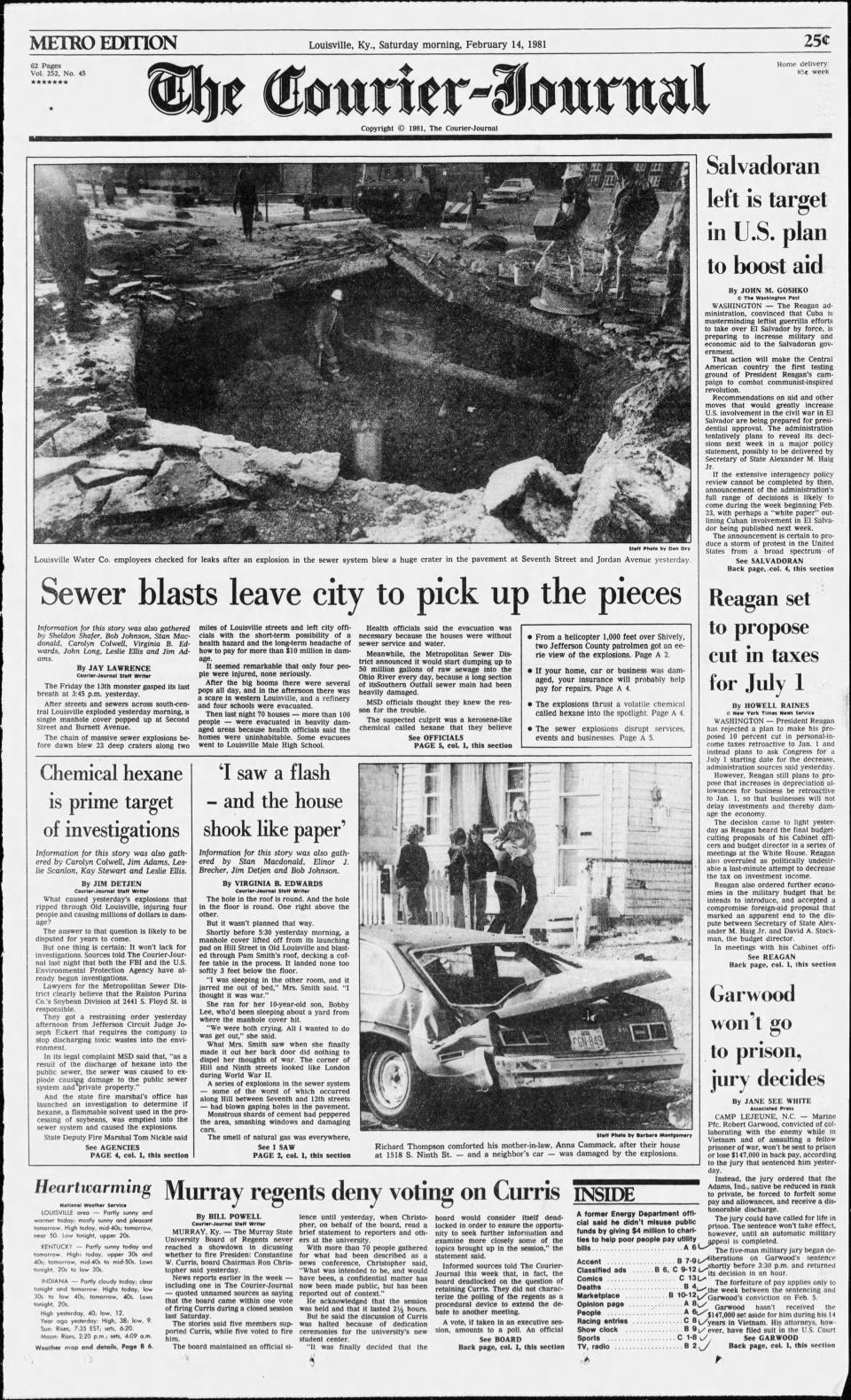Retro Louisville: 1981 sewer explosions sent manhole covers flying, collapsed streets
A series of sewer explosions rocked Louisville on Friday, Feb. 13, 1981, sending manhole covers flying and leaving gaping holes in multiple streets across the city.
The Courier Journal reported the next day that "a chain of massive sewer explosions before dawn blew 23 deep craters along two miles of Louisville streets and left city officials with the short-term possibility of a health hazard and the long-term headache of how to pay for more than $10 million in damage." That would be about $37 million in 2024.
Only four people were injured and none seriously.
After the big booms there were several pops all day, and in the afternoon there was a scare in western Louisville, and a refinery and four schools were evacuated.
Then 70 houses — more than 100 people — were evacuated in heavily damaged areas because health officials said the homes were uninhabitable. Some evacuees went to Louisville Male High School.
Shortly before 5:30 a.m., a manhole cover lifted off from its launching pad on Hill Street in Old Louisville and blasted through Pam Smith's roof, decking a coffee table in the process.
"I was sleeping in the other room, and it jarred me out of bed," Mrs. Smith said. "I thought it was war."
"I looked in the sky and saw all these rocks coming from over there," Shirley Antle said, pointing down the street. "I thought the world was coming to an end, and it looked it, too."

Her brother, Gary, looked out his window after hearing what he thought was a bomb. "Then I saw a red-yellow ball of fire race down the street. It was very bright," he said.
The Metropolitan Sewer District announced it would dump up to 50 million gallons of raw sewage daily into the Ohio Riber after a long section of its Southern Outfall sewer main was heavily damaged.
MSD alleged in Jefferson Circuit Court that Ralston Purina Co. plant at 2441 S. Floyd St. caused the disaster by allowing a "large quantity" of hexane to enter the sewer system. It asked that the company be forced to pay the bill for damage to the sewer and to private property.
A Phillips Petroleum Co. official said hexane is derived from both natural gas and crude oil. Hexane is often used in the removal of oil from soybeans and cotton seeds, in making low-temperature thermometers, plastics and rubber, and as a dilutant for paints.
A chemist with Ralston Purina said the company uses the solvent to remove oil from soybeans at processing plants in Louisville.
The worst damage was in an L-shaped corridor formed by Hill Street east of 12th and Ninth streets and south to Seventh.
The largest single hole, not counting the street collapses along Hill, was at Ninth and Shipp. The crater there was about 30 feet long, 30 feet wide and about 25 feet deep.
Tom Williams and his family had just settled into some cots against a wall at Male High. They hadn't been forced to evacuate, but they lived just one street over from the area that was evacuated. His wife got scared, so they left.
Daughter Michelle, 7, clutched a teddy bear as she sat on a cot next to her daddy. She didn't mind spending the night in a school gym.
She said, "It's better than getting blew up."
This article originally appeared on Louisville Courier Journal: Retro Louisville: 1981 sewer explosions

